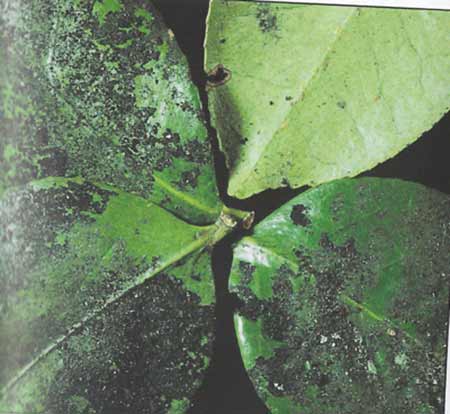Sooty Mold
Sooty mold is a relatively harmless affectation that appears on the leaves of a wide variety of plants. Although the sooty mold is essentially harmless, its presence does signal the presence of more destructive insects such as aphids, lacebugs, whiteflies, mealybugs, and cottony scale.
The destructive insects thrive on the juices from the leaves of the host plants. They are unable to fully digest the sugars, so their excretions are sticky and sugar-laden. The excretions which fall on the leaves below the infested leaves is known as honeydew. The sweet honeydew is a growth medium for the fungi which creates the sooty appearance on the leaves. Since the fungi do not attack the leaves of the host plant directly, sooty mold is considered harmless. At the worst, heavily affected leaves will be deprived of light, limiting their photosynthesis capabilities, thereby diminishing the plant’s ability to feed itself.
Sooty mold can be wiped off the leaves, or rinsed off with a gentle spray. If left alone, it will eventually be washed off by rain. The most important part of treatment for sooty mold is to find the leaves and twigs above the affected leaves to identfy and treat for the specific insect(s) which are responsible for the honeydew.








